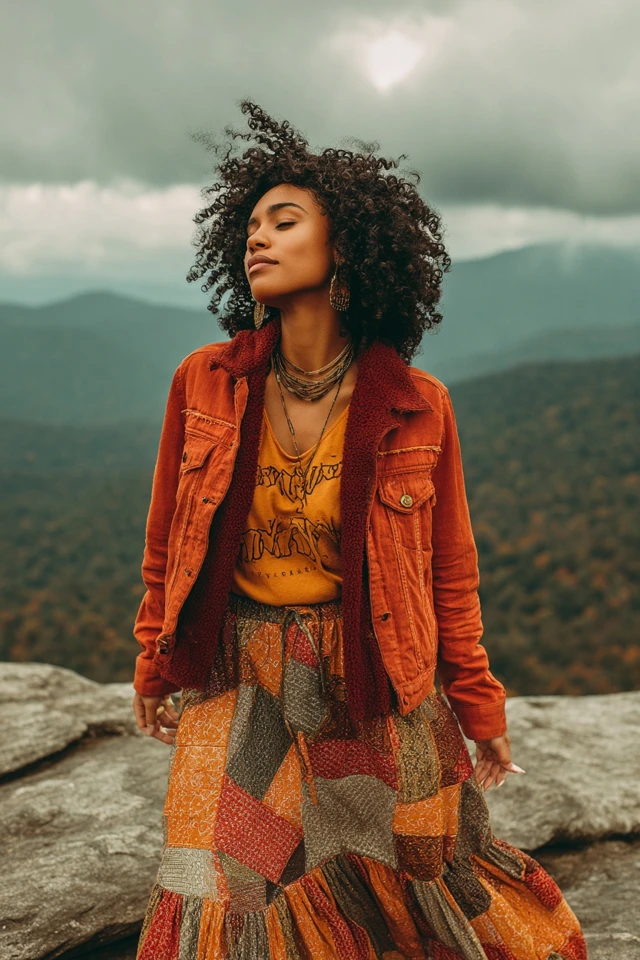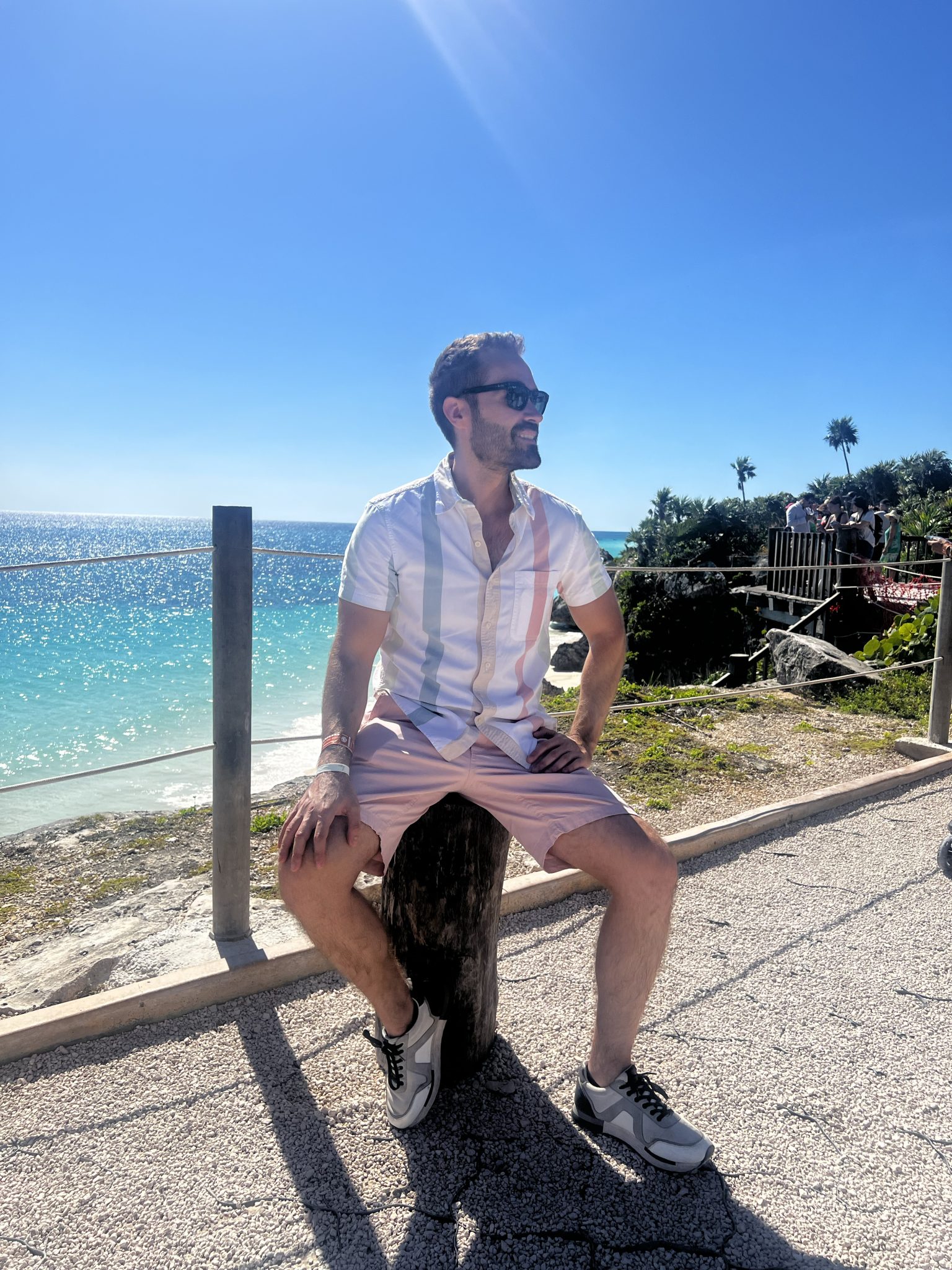Introduction
One crisp autumn morning, as I stepped out wearing a tailored camel coat paired with deep burgundy ankle boots, I noticed several heads turning—not for the sake of vanity, but because this outfit sparked a quiet confidence within me. The way clothing interacts with our environment and mood is subtle yet profound, shaping not only how others perceive us but how we, in turn, navigate our day. Fall street style offers an abundant playground to experiment, layer, and express individuality against a backdrop of changing leaves and cooler air.
As a fashion designer and color psychology expert, I’ve spent years unraveling how the choices we make in style and fit extend beyond aesthetics—they influence cognitive perceptions and emotional self-regulation. Fall’s transitional nature demands garments that balance warmth with style, but it’s equally an opportunity to engage with fashion narratively. How we dress during this season reflects our personality, aspirations, and, important for many, the desire to make that memorable first impression.
About the Author and My Trend Boutique
Understanding fall street style is vital in today’s fast-paced culture where trends flood every corner, yet individuality must shine through. This post aims to demystify the art and science of dressing smartly for fall—interweaving the psychology of color, body-conscious styling, current trends, and timeless staples. Whether you’re a seasoned fashionista or simply seeking to elevate your daily look, these insights will empower you to craft outfits that resonate internally and outwardly.
Foundational Concepts
Before diving into specific styling strategies, let’s establish some foundational terminology that will enrich your fashion toolkit and encourage thoughtful choices rather than impulse buys.
Color Psychology
Color psychology studies how hues affect human behavior and emotions. Research suggests that colors can influence neurotransmitters linked to mood and even interpersonal communication. For instance, wearing red can evoke feelings of power and confidence, while blues often calm and encourage trust. These reactions are often subconscious, making color a powerful tool for personal branding in street style. From the vibrant pumpkin orange jackets of fall to the elegant charcoal grays, each color conveys its unique message that can complement or even enhance your emotional state.
Trend Forecasting
Fashion trend forecasting combines data analytics with cultural insight to predict what styles, colors, and fabrics will dominate upcoming seasons. This process involves examining street style scenes globally, runway shows, social media, and broader societal moods. For example, the recent resurgence of vintage-inspired outerwear aligns with a wider nostalgic trend reflecting our collective yearning for comfort and craftsmanship during uncertain times. Understanding trend cycles enables consumers to invest in pieces that feel contemporary yet can be integrated with their existing wardrobe thoughtfully.
Dressing to Impress
“Dressing to impress” goes far beyond surface-level vanity; it’s about leveraging clothing to articulate competence, approachability, and self-respect. Psychologists note that well-fitted and polished attire can increase perceived credibility and social status, influencing everything from professional opportunities to casual interactions. In street style, this means selecting pieces that fit your body well, align with your lifestyle, and strategically highlight your best features, making you feel both comfortable and confident.
Incorporating these concepts invigorates your approach to fall dressing, transforming it from a routine task into a mindful, empowering ritual.
Picture Gallery
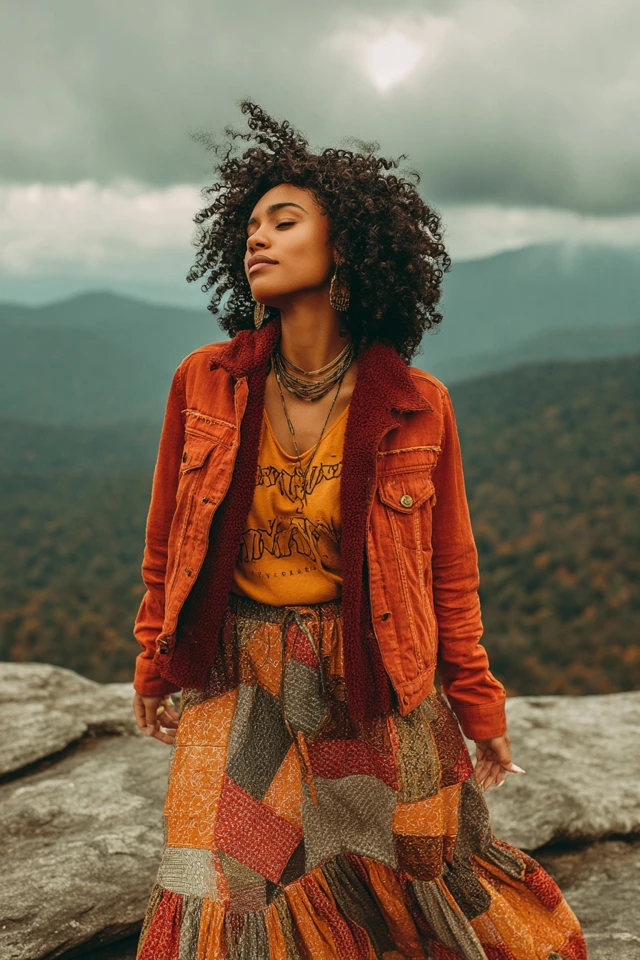
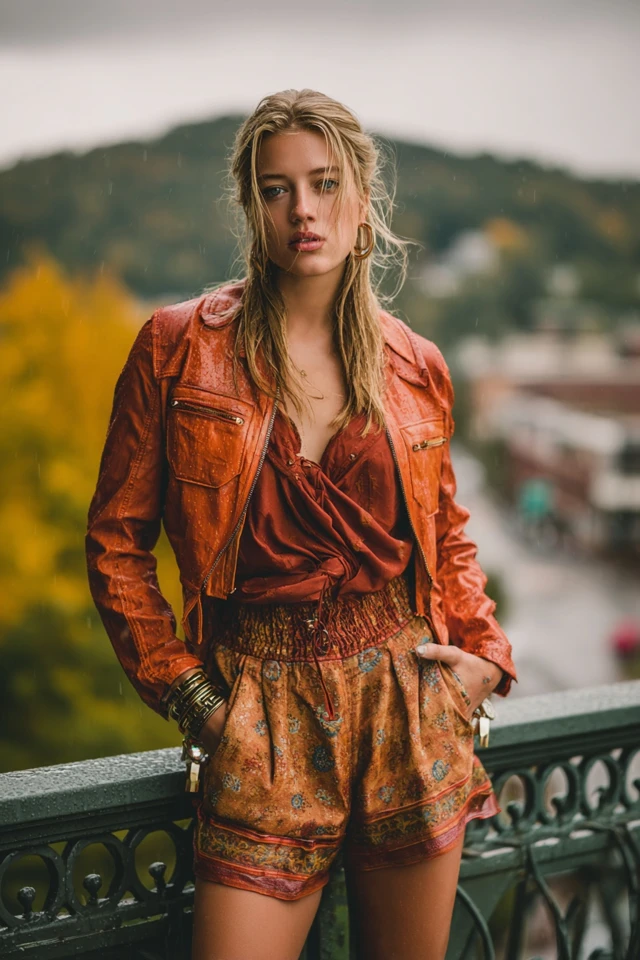
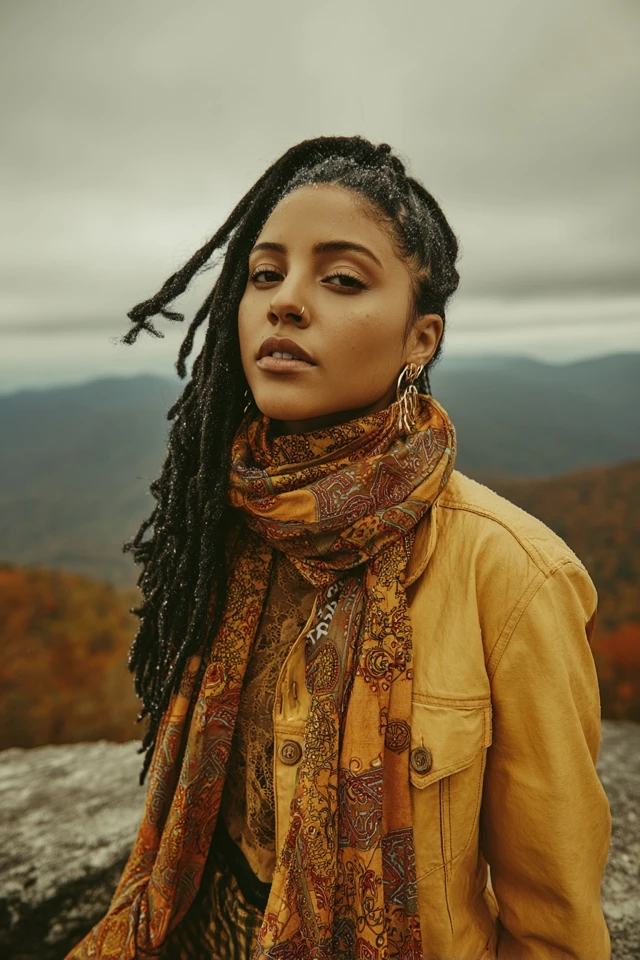

Color Psychology & Emotional Impact
The interplay between color and emotion is particularly pronounced in fall street style, as the season’s palette itself invites contemplation. Deep reds suggest passion and assertiveness, inviting you to make bold statements. Earthy browns and olive greens evoke groundedness and reliability, ideal for cultivating an approachable yet sophisticated look. Knowing how these colors affect your mood and those around you can guide your selections to reinforce your personal and professional narratives.
First impressions are often formed within seconds, and color plays an integral role in this cognitive snap judgment. Studies in social psychology reveal that people wearing warmer hues may be seen as more enthusiastic and accessible, while those in cooler colors might be perceived as more calm and reserved. By harnessing these insights, you can tailor your fall street style to situations demanding different social dynamics—whether that’s standing out during casual meetups or exuding understated confidence in formal settings.
For example, pairing a burnt sienna scarf with neutral layers not only warms your outfit aesthetically but also conveys friendliness and openness. Conversely, monochromatic navy ensembles can communicate professionalism without appearing stiff. Subtle shifts in saturation or brightness can drastically change the impression you make, offering a versatile palette to navigate varied environments.
Personal Style & Body Type Considerations
One of the most liberating aspects of fashion is its capacity to honor individuality, particularly through styles that complement your unique body shape and complexion. The right silhouette enhances comfort and boosts confidence by aligning with your natural form rather than contrasting it.
Silhouettes to Know
- Hourglass: Emphasize your defined waist with belted coats and fitted jackets. Pencil skirts and tailored trousers balance curves without overwhelming.
- Rectangle: Add shape and dimension with peplum tops, layered knits, and structured outerwear. Volume in sleeves and pleated skirts can create appealing visual contours.
- Pear: Draw attention upwards using statement collars, bold scarves, and embellished shoulders. A-line skirts and bootcuts harmonize lower body proportions.
- Apple: Opt for flowing fabrics that drape elegantly without clinging, such as soft wool blends. V-necks elongate the torso, while darker hues on bottom sections minimize focus.
Fabrics & Hues for Complexions
Complementing your skin tone with appropriate colors enhances radiance. Warm complexions glow in mustard yellows, rust oranges, and olive greens, which align beautifully with fall themes. Cool skin tones often shine in jewel tones like sapphire, amethyst, or ruby shades. Neutral washes such as taupe and slate serve as universally flattering base layers to anchor your look.
Style Quiz
Consider the following to find your ideal style fit this fall:
- Do you prefer fitted or loose garments?
- Which colors make you feel energized versus calm?
- Are you drawn to statement pieces or classic essentials?
- How does your daily routine influence your wardrobe choices—comfort, aesthetics, or versatility?
- Which fabrics feel most natural against your skin during cooler months?
Reflecting on these questions can clarify your personal style philosophy and streamline shopping decisions.
Current Trends & Timeless Classics
Every season brings fresh interpretations, yet building a versatile wardrobe requires balancing trends with timeless elements. This fall, expect to see a revival of plaid patterns, oversized blazers, and sustainably sourced fabrics gaining prominence. Bold color blocking pairs especially well with classic neutrals, offering a sophisticated yet edgy look for urban environments.
Key trending colors include warm terracotta, deep forest green, and muted lavender—each blending seamlessly with perennial staples like camel coats, black leather boots, and crisp denim. Incorporating these shades through scarves, hats, or handbags is a subtle way to infuse modernity without overwhelming your baseline aesthetic.
Timeless classics such as trench coats, tailored trousers, and cashmere sweaters remain foundational. They provide balance and longevity, making them worthy investments that serve beyond fleeting trends. Pairing a hunter green blazer with classic black jeans, for example, can traverse both day-to-night occasions effortlessly.
Practical Tips & Recommendations
Maximize your fall street style with practical strategies tailored to today’s dynamic lifestyles.
- Layering Smartly: Utilize lightweight knits under oversized coats for warmth without bulk. Experiment with textures—for instance, pairing suede boots with a chunky knit scarf adds dimension.
- Wardrobe Maintenance: Regularly assess and repair key pieces. Winter-ready fabrics like wool require proper care; use gentle detergents and air dry to maintain fibers’ integrity.
- Shopping Tips: Prioritize quality over quantity. Select items that complement your body shape and existing colors, favoring pieces with versatile potential. Don’t hesitate to try a color just outside your comfort zone—sometimes a slight shift can be transformative.
- Accessory Play: Introduce personality through handbags, belts, and minimalistic jewelry. These small elements can pivot the entire outfit’s mood.
- Color Combinations: Try pairing unexpected hues such as mustard with teal or burgundy with navy. These combinations offer freshness without clashing, perfect for street style’s eclectic spirit.
By approaching fashion as both art and science, your fall wardrobe can become an extension of your emotional intelligence and aesthetic sensibility.
FAQs
- How do I find my signature color for fall fashion?
- Identify tones that consistently make you feel confident and noticed—try swatching fall hues near your face in natural light to see which brighten your complexion and mood. Consider your skin undertone and the psychological impact of colors when making your choice.
- Is it possible to update my wardrobe on a budget and still look stylish?
- Absolutely. Focus on versatile staples and incorporate trend-forward accessories. Thrift shopping and sales are great opportunities to find quality items. Prioritize fit over brand names, and mix expensive with affordable pieces smartly.
- What essentials should be in a fall capsule wardrobe?
- Key items include a tailored camel coat, dark denim, neutral knits, ankle boots, and versatile scarves. These foundations allow multiple outfit combinations suitable for different settings.
- How can I balance trendy pieces with my classic style?
- Introduce trends through accessories or accent items while maintaining a core of timeless clothing. For example, pair trendy oversized blazers with traditional trousers or combine plaid scarves with simple sweaters.
- What fabrics work best for layering in fall?
- Look for breathable yet insulating materials such as merino wool, cashmere, and cotton blends. Avoid overly bulky fabrics that can restrict movement; lightweight down or quilted vests also add warmth without excess weight.
Conclusion
Fall street style offers a fertile ground for self-expression, blending creativity with psychological insight. By understanding the power of color, silhouette, and fabric, and balancing trendiness with timelessness, you can build a wardrobe that amplifies confidence and captivates effortlessly. Remember, fashion is a personal narrative—don’t shy away from experimenting with pieces that resonate with your evolving story.
I invite you to share your own fall styling experiences in the comments below, subscribe for more expert advice, and embrace the season with renewed passion for dressing to impress. Your wardrobe is a canvas—paint it thoughtfully, wear it boldly.

